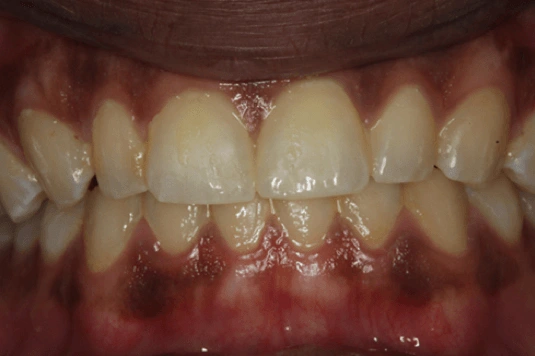Re-examining the Plaque-Gingivitis Connection and the Role of Stannous Fluoride
Course Number: 579
Course Contents
Introduction
Because gingivitis is highly prevalent and can progress to periodontitis in susceptible individuals, clinicians can recommend products containing antimicrobial agents as a means to inhibit bacterial metabolism and/or decrease bacterial quantity. Not all antimicrobials are equivalent. Recent research has shown another dimension by which the sole fluoride which is concurrently an antimicrobial – stannous fluoride – fights gingivitis: it reduces plaque toxicity via disruption of the normal inflammatory host response that would be triggered by the presence of plaque endotoxins in the gingival sulcus. Using a well-formulated antimicrobial bioavailable fluoride toothpaste is an easy to adapt and research-supported means for: 1) gingivitis prevention in healthy but susceptible patients; and 2) chemotherapeutic treatment for patients with existing disease.
Case Study 1
Emily is a 33-year old patient who reports brushing her teeth every day after breakfast and before bedtime, and flossing twice a week. She presents with minimal plaque at her biannual preventive care appointments, suggesting her oral hygiene self-assessment is probably accurate. Yet, Emily states that her gums often bleed, and the exam reveals marginal redness, edema, and widespread bleeding upon probing, as shown in the representative example in Figure 1. There is nothing in her medical history or concomitant medication use that appears contributory. How can the apparent disconnect between Emily’s home care skills and her clinical status be explained if the quantity of residual plaque is the sole determinant in gingivitis and its extent? Is Emily a rare case?
Figure 1.
Gingival bleeding and areas of inflammation are present despite little plaque accumulation in this patient example.
Case Study 2
Emily's situation stands in stark contrast to that of Daniel, a 42-year old patient who generally comes to his appointments with moderate to heavy supragingival plaque. He admits that oral hygiene is not a top priority, while nonetheless displays few signs of gingivitis and no pockets (Figure 2 illustrates this hypothetical case). Is he, too, an anomaly?
Figure 2.
A representative depiction of the gingiva of a patient who – despite subpar oral hygiene and visible plaque – doesn’t show overt gingivitis symptoms.



